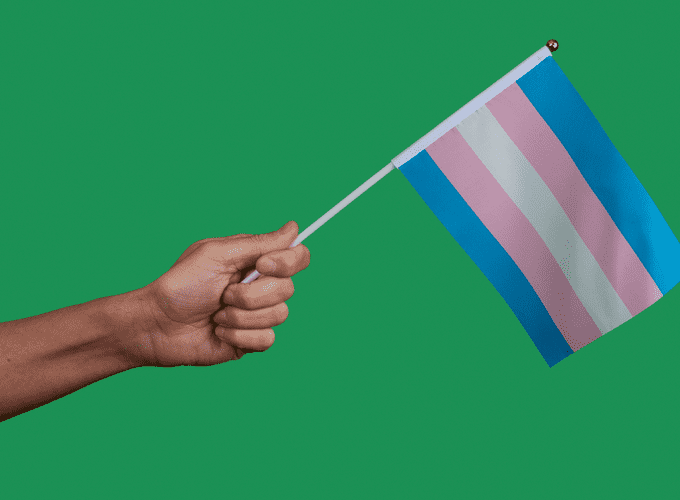
Share Your Expertise at the NCCHC Spring Conference on Correctional Health Care
Help shape the future of correctional health care.
Home Transgender Visibility in Corrections
 Mar 31, 2022
Mar 31, 2022March 31 is international Transgender Day of Visibility, a good time to review NCCHC’s position statement on Transgender and Gender Diverse Health Care in Correctional Settings.
Transgender Day of Visibility was founded by U.S.-based transgender activist Rachel Crandall Crocker in 2009 to bring together trans people and raise awareness of their contributions – and their struggles.
Before then, the only awareness day dedicated to transgender and gender-nonconforming people was the Transgender Day of Remembrance (November 20), which commemorates those who have lost their lives. Crandall Crocker’s idea was to create a day that pays homage to living transgender and gender-nonconforming individuals while bringing awareness to work that needs to be done to achieve equity and justice for them.
2009 was the same year that NCCHC initially adopted its position statement on Transgender and Gender Diverse Health Care in Correctional Settings. Since then, the statement has been twice revised to reflect changes in understanding and policy related to this incarcerated population.
Transgender and Gender Diverse Health Care in Correctional Settings details 30 specific points outlining Health Management; Patient Safety; Community Collaboration, Continuity of Care, and Discharge Planning; and Training as they relate to the care and safety of transgender individuals.
Transgender and Gender Diverse Health Care in Correctional Settings
Introduction
Transgender people may face an array of risks to their health and well-being during incarceration, and are often targets of discrimination, physical assault, and emotional abuse. They may be assigned by custody and classification staff to correctional facilities according to their gender identity and presentation, or alternatively, according to their genitals and/or sex assigned at birth. Many have specific health needs related to gender dysphoria and other comorbid medical and mental health conditions.
Health staff should be aware that transgender patients may be more likely to have experienced sexual and other forms of trauma, but that trauma experiences do not cause transgender identity or gender dysphoria. This special population has unique health needs and thus this position statement recommends the appropriate and responsible provision of health care as clinically indicated.
The screening, referral, evaluation, and management of medical and mental health care and consideration of hormonal treatment for gender dysphoria should follow accepted standards developed by professionals with expertise in transgender health. For transgender patients, determination of gender-affirmative treatment necessary should be on an individualized case-by-case basis, with the risks, benefits, alternatives, and other factors related to treatment carefully weighed and discussed with each patient. Ideally, health staff are trained in transgender health care. Alternatively, they should have access to consult with other professionals with such expertise to help determine appropriate evaluation and management and receive training on transgender-related care. Surgical interventions for incarcerated patients with gender dysphoria is a particularly complicated area and additional specialty consultation is highly recommended as clinically indicated.
Definitions
Gender identity refers to each person’s deeply felt psychological sense of self as male, female, or something else.
Transgender, as defined by the World Professional Association for Transgender Health (WPATH), “is an adjective to describe a diverse group of individuals who cross or transcend culturally defined categories of gender. The gender identity of transgender people differs to varying degrees from the sex they were assigned at birth.”
Transgender women are individuals whose birth sex was male but who understand themselves to be, and desire to live their lives as, women. Transgender men are individuals whose birth sex was female but who understand themselves to be, and desire to live their lives as, men. Transgender people may be male, female, neither, both, or another gender. Transgender people display a range of sexual orientations similar to those who are not transgender. Current evidence indicates that individuals cannot voluntarily change their gender identity; however, some individuals may experience shifts in how they express or experience their gender over the course of a lifetime. In this position statement, the term “transgender” is used to refer to individuals who are transgender and gender diverse (TGD) and those who present with gender dysphoria.
Gender nonconformity refers to the extent to which a person’s gender identity, role, or expression differs from the cultural norms prescribed for people of a particular sex.
Gender dysphoria is a DSM-5 psychiatric disorder that was referred to as gender identity disorder (GID) in earlier DSM versions. Gender dysphoria refers to discomfort or distress caused by a discrepancy between a person’s gender identity and that person’s sex assigned at birth (and the associated gender role and/or primary and secondary sex characteristics). It should be noted that not all transgender people experience gender dysphoria symptoms or associated psychosocial impairments, or meet the DSM-5 diagnostic criteria for gender dysphoria. Transgender individuals are at risk for other mental health disorders with associated distress and impairment, such as major depression, anxiety disorders, and substance use disorders, especially in the community and in correctional environments.
Adolescent/Developmental Issues
Transgender youth have higher rates of depression, suicidality, self-harm, substance use, and eating disorders when compared with their peers. Adolescence is a time of immense physical and mental changes, including issues related to gender identity. The brain continues to develop during adolescence and for many adolescent youths, gender identity is an exploration and not a foregone conclusion. It has been demonstrated that adolescents should be allowed to express gender identities as they experience them, and that gender identities may be fluid and may change over time, and not all youth will persist in a transgender identity into adulthood. Review of community records and evaluation by a mental health professional experienced in working with transgender youth will help determine the youth’s current functioning, clinical stability, and the need for additional mental health treatments and interventions.
The diagnostic evaluation and consideration of initiation, continuation, or other adjustments to hormone therapy (e.g., pubertal suppression agents) and other treatment interventions for incarcerated transgender adolescents requires a multidisciplinary treatment team approach: youth psychoeducation and assent, parent/legal guardian involvement, ongoing communication and consent for minor youths for hormone therapy and/or psychotropic medication treatments (this may vary based on the youth’s age and legal requirements of the jurisdiction). Facilities that lack transgender expertise should consult with psychiatry, psychology, adolescent medicine, and endocrinology consultants as needed. Research has found that transgender youth who receive appropriate hormone therapy have significantly improved mental health that continues into their adult life. This underscores the importance of appropriate care for these patients.
Read the entire position statement here. See all NCCHC position statements here.


